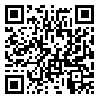Volume 3, Issue 2 (Spring 2015-- 2015)
PCP 2015, 3(2): 79-88 |
Back to browse issues page
Download citation:
BibTeX | RIS | EndNote | Medlars | ProCite | Reference Manager | RefWorks
Send citation to:



BibTeX | RIS | EndNote | Medlars | ProCite | Reference Manager | RefWorks
Send citation to:
Jalali Asheghabadi P, Borjali A, Hosseinsabet F. Overt and Covert Narcissism in Iranian Students: The Role of Self-esteem and Shame. PCP 2015; 3 (2) :79-88
URL: http://jpcp.uswr.ac.ir/article-1-243-en.html
URL: http://jpcp.uswr.ac.ir/article-1-243-en.html
1- Department of Psychology, Faculty of Psychology and Education, Allameh Tabataba’i University, Tehran, Iran. , payvandjalali@gmail.com
2- Allameh Tabataba'i University
2- Allameh Tabataba'i University
Abstract: (7101 Views)
Objective: For decades, both theory and research have focused on the role of self-esteem and shame in constructing narcissistic traits. However, studies on the exact relationship between these two and overt and covert facets of narcissism have been equivocal.
Methods: The current study is correlational. It examined these relationships among 308 Iranian college students (155 males, 153 females, mean age=23.49 years, SD=2.83). The target population was all students of national universities of Tehran, Iran. The sampling method was non-random multi-step clustering. Participants were asked to fill four self-report measures: Narcissistic Personality Inventory (NPD), Rosenberg Self-esteem Scale (RSES), Test of Selfconscious Affect (TOSCA-3), and Hypersensitive Narcissism Scale (HSNS). The data were analyzed by SPSS 19.0.0 software, using Pearson’s Correlation, T-test and Multiple Regression Analysis methods.
Results: Surprisingly, there was no significant difference between men and women with respect to NPI scores. Findings also revealed that shame was negatively related to overt narcissism (r=-0.22, P<0.05) and positively related to covert narcissism (r=0.23, P<0.05). Self-esteem was found to be positively correlated with overt narcissism (r=0.42, P<0.01) and negatively correlated with covert narcissism (r=-0.30, P<0.01).
Conclusion: The results provide support for the models of overt narcissism in which the narcissistic self serves as a buffer against inner feelings of inferiority. It also supports the importance of shame and low self-esteem in shaping the covert narcissistic traits. However, shame could not differentiate between overt and covert narcissism. The empirical, cultural, and clinical implications of the findings are discussed.
Type of Study: Original Research Article |
Subject:
Analytical approach
Received: 2014/09/10 | Accepted: 2015/01/18 | Published: 2015/04/1
Received: 2014/09/10 | Accepted: 2015/01/18 | Published: 2015/04/1
| Rights and permissions | |
 |
This work is licensed under a Creative Commons Attribution-NonCommercial 4.0 International License. |





